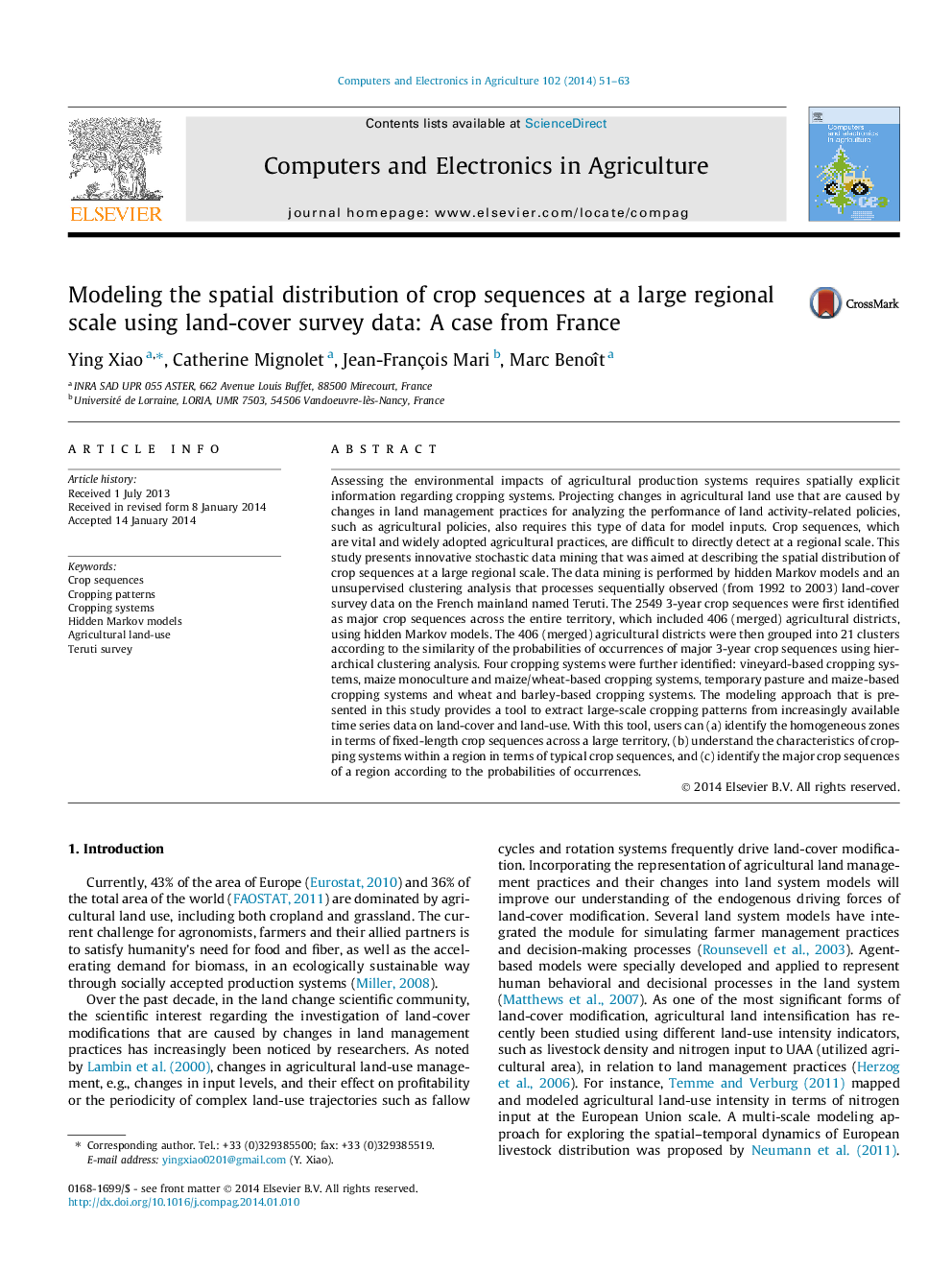| کد مقاله | کد نشریه | سال انتشار | مقاله انگلیسی | نسخه تمام متن |
|---|---|---|---|---|
| 84335 | 158875 | 2014 | 13 صفحه PDF | دانلود رایگان |
• Mining crop sequences in land survey dataset with hidden Markov models.
• Estimation of the crop sequence probabilities without a priori using survey data.
• District clustering based on the similarity of occurrence of crop sequences.
• Cluster description in terms of 21 groups belonging to four cropping systems.
Assessing the environmental impacts of agricultural production systems requires spatially explicit information regarding cropping systems. Projecting changes in agricultural land use that are caused by changes in land management practices for analyzing the performance of land activity-related policies, such as agricultural policies, also requires this type of data for model inputs. Crop sequences, which are vital and widely adopted agricultural practices, are difficult to directly detect at a regional scale. This study presents innovative stochastic data mining that was aimed at describing the spatial distribution of crop sequences at a large regional scale. The data mining is performed by hidden Markov models and an unsupervised clustering analysis that processes sequentially observed (from 1992 to 2003) land-cover survey data on the French mainland named Teruti. The 2549 3-year crop sequences were first identified as major crop sequences across the entire territory, which included 406 (merged) agricultural districts, using hidden Markov models. The 406 (merged) agricultural districts were then grouped into 21 clusters according to the similarity of the probabilities of occurrences of major 3-year crop sequences using hierarchical clustering analysis. Four cropping systems were further identified: vineyard-based cropping systems, maize monoculture and maize/wheat-based cropping systems, temporary pasture and maize-based cropping systems and wheat and barley-based cropping systems. The modeling approach that is presented in this study provides a tool to extract large-scale cropping patterns from increasingly available time series data on land-cover and land-use. With this tool, users can (a) identify the homogeneous zones in terms of fixed-length crop sequences across a large territory, (b) understand the characteristics of cropping systems within a region in terms of typical crop sequences, and (c) identify the major crop sequences of a region according to the probabilities of occurrences.
Journal: Computers and Electronics in Agriculture - Volume 102, March 2014, Pages 51–63
